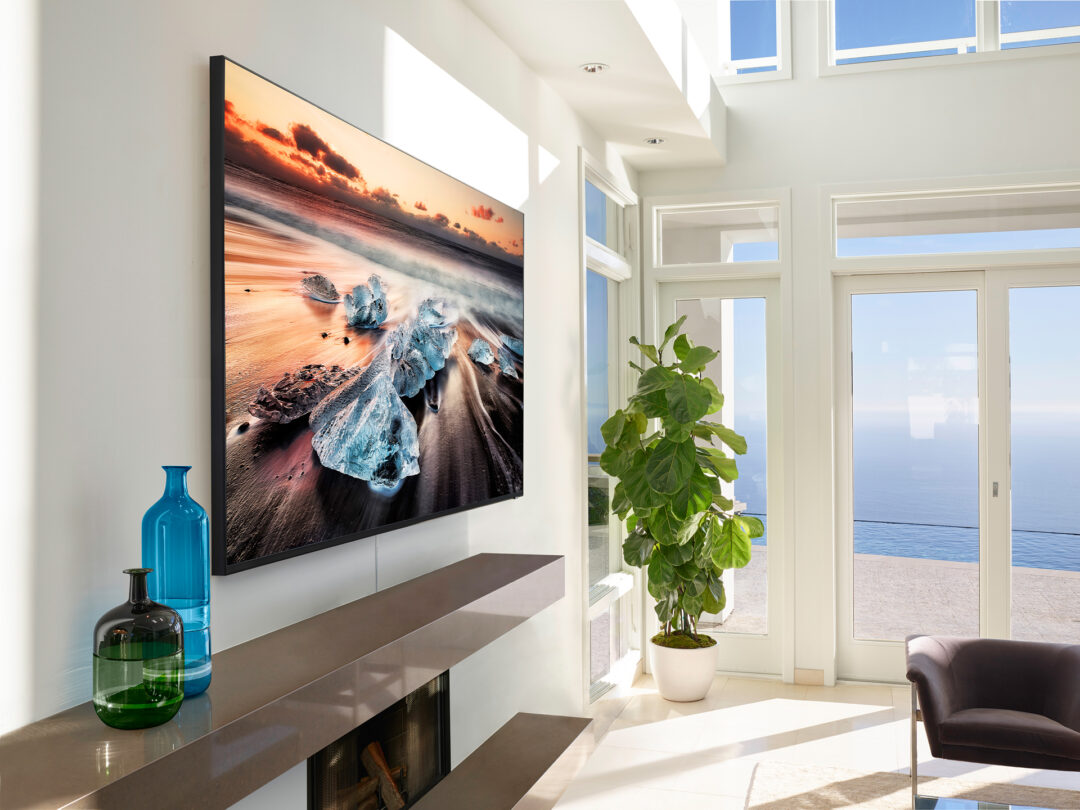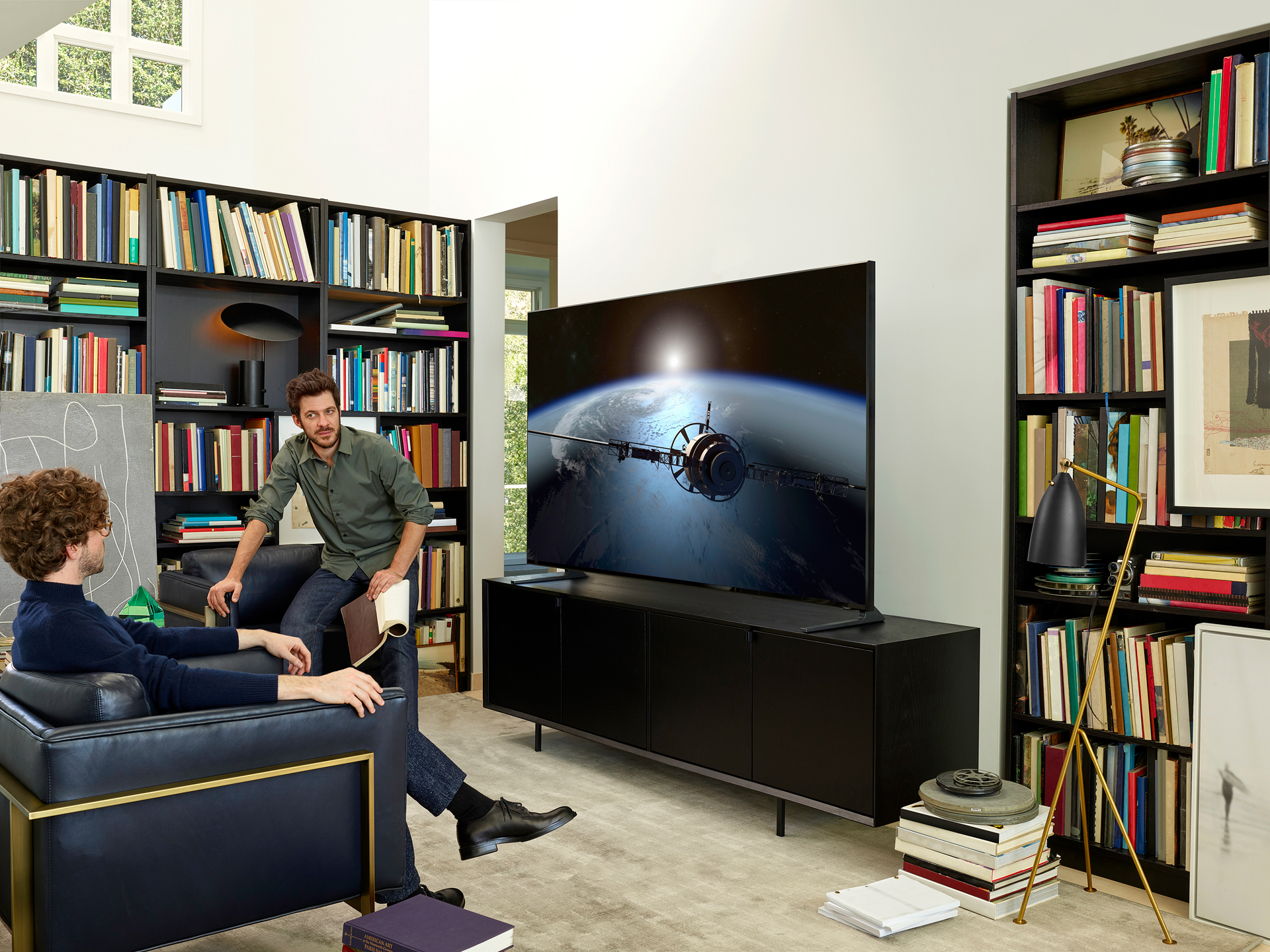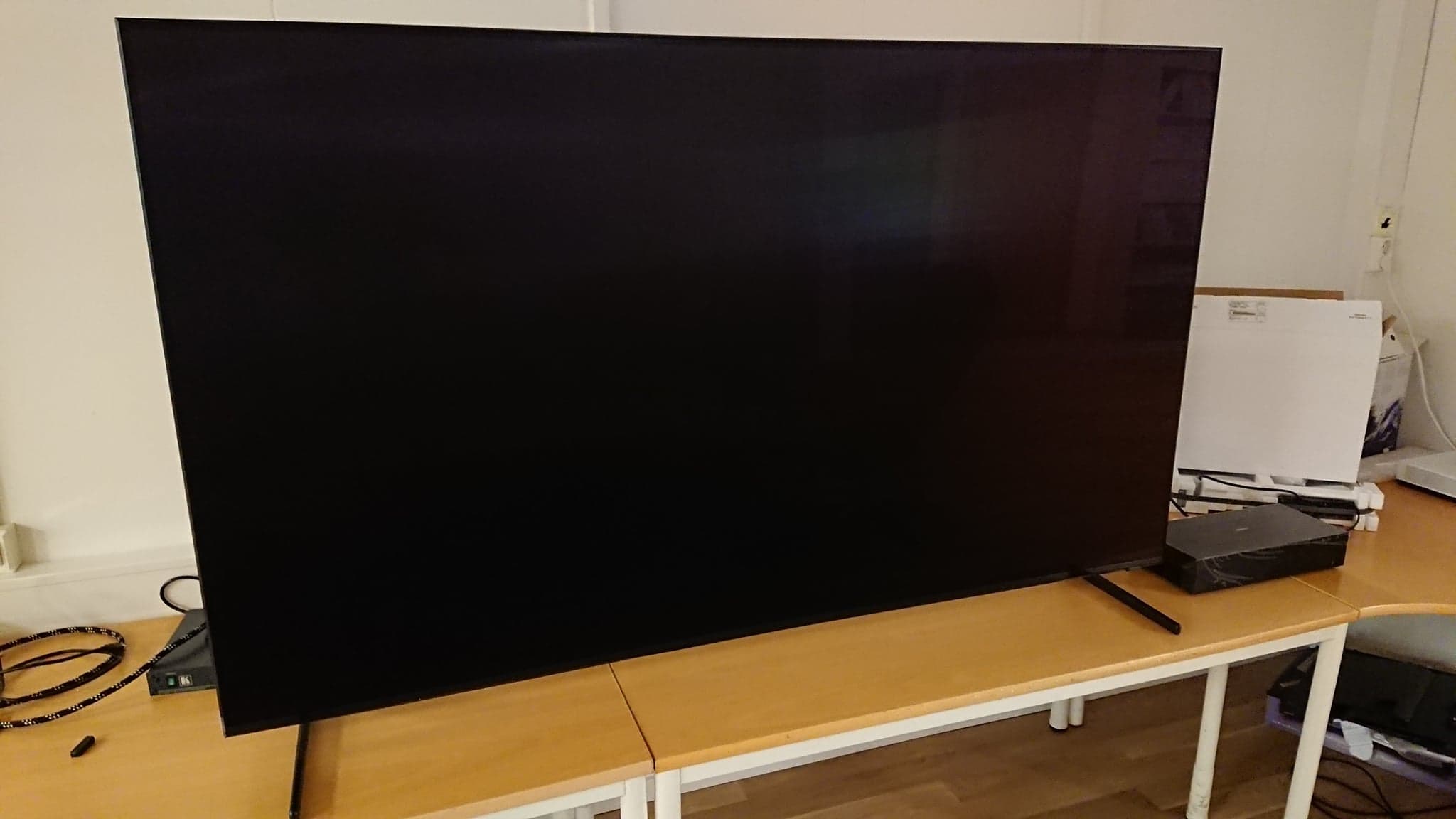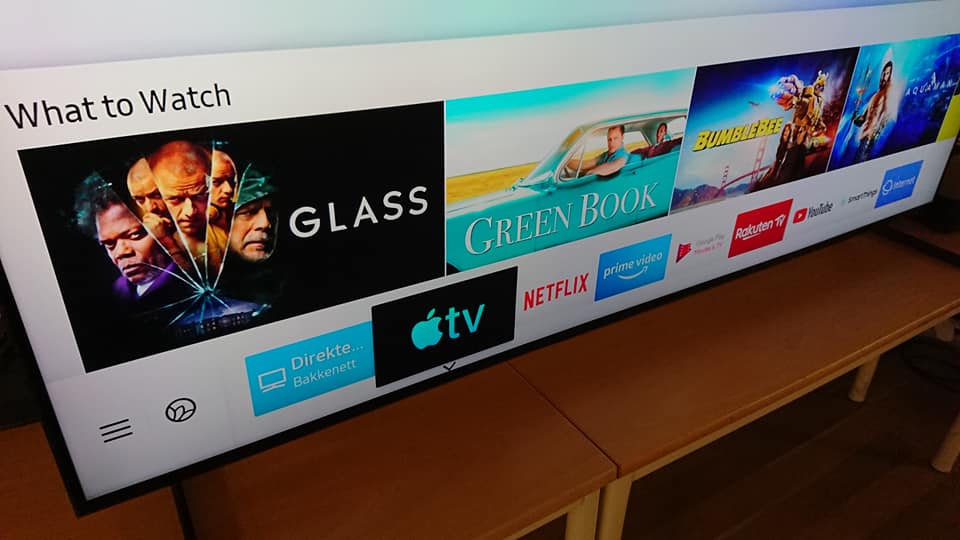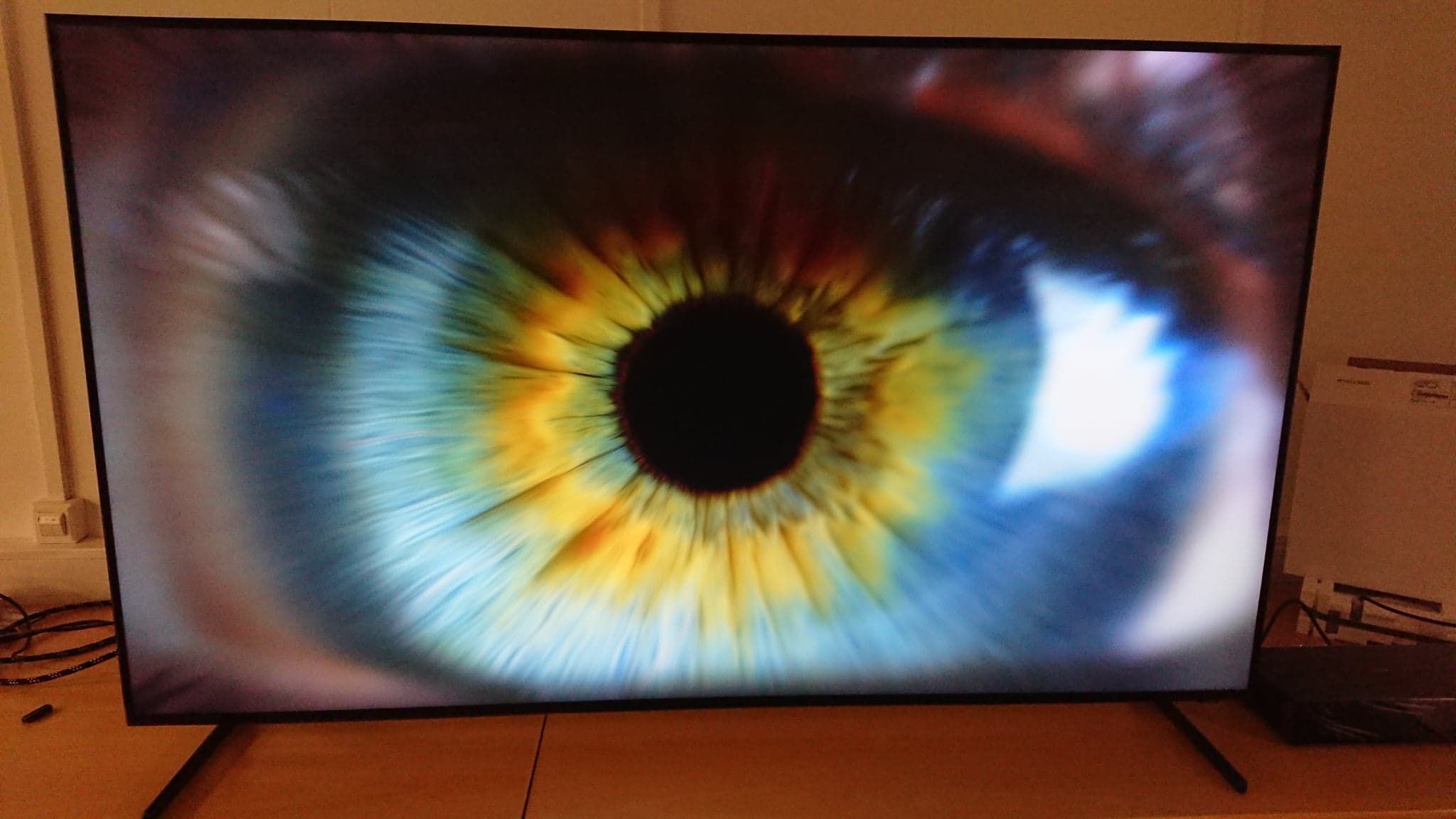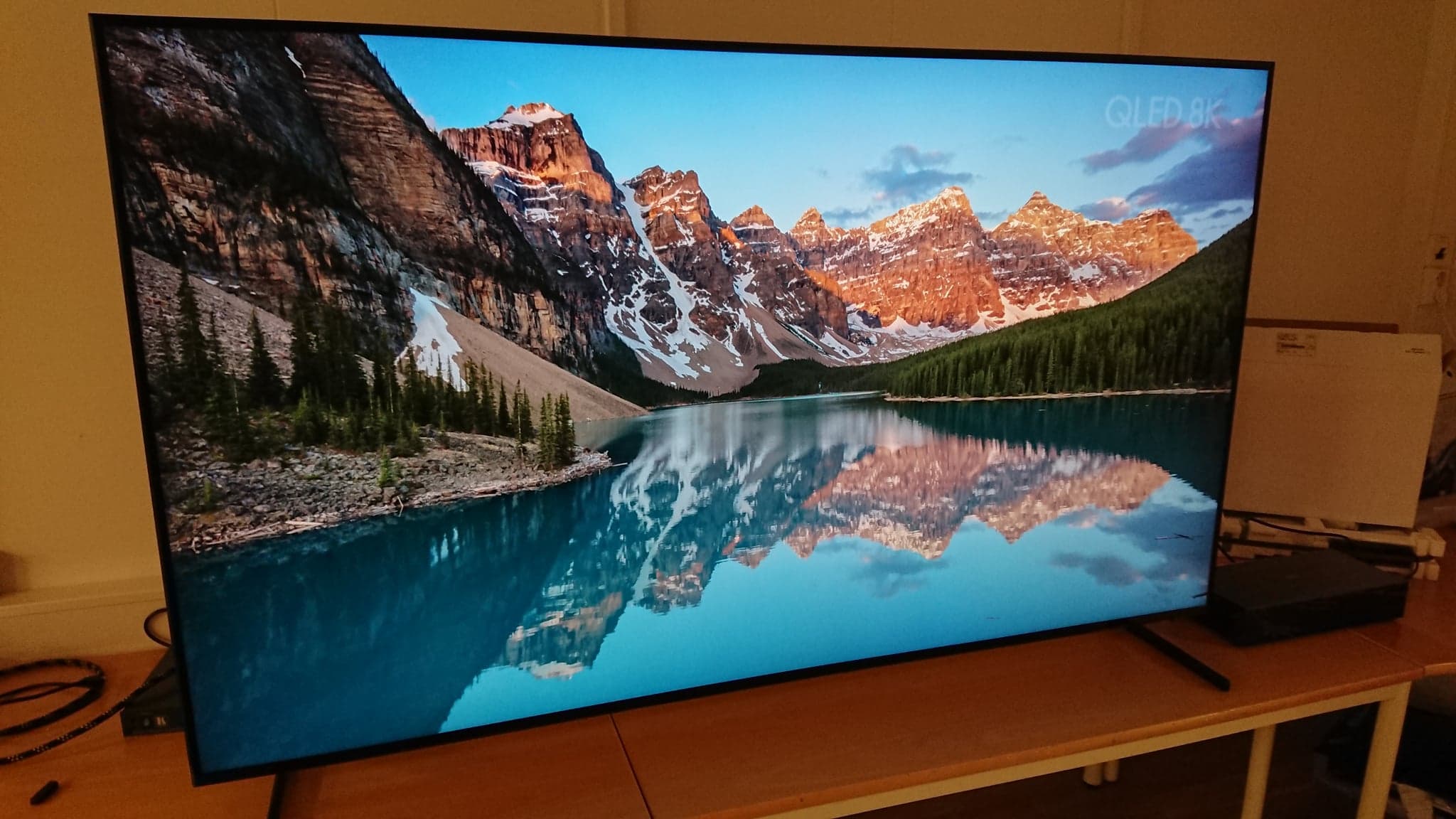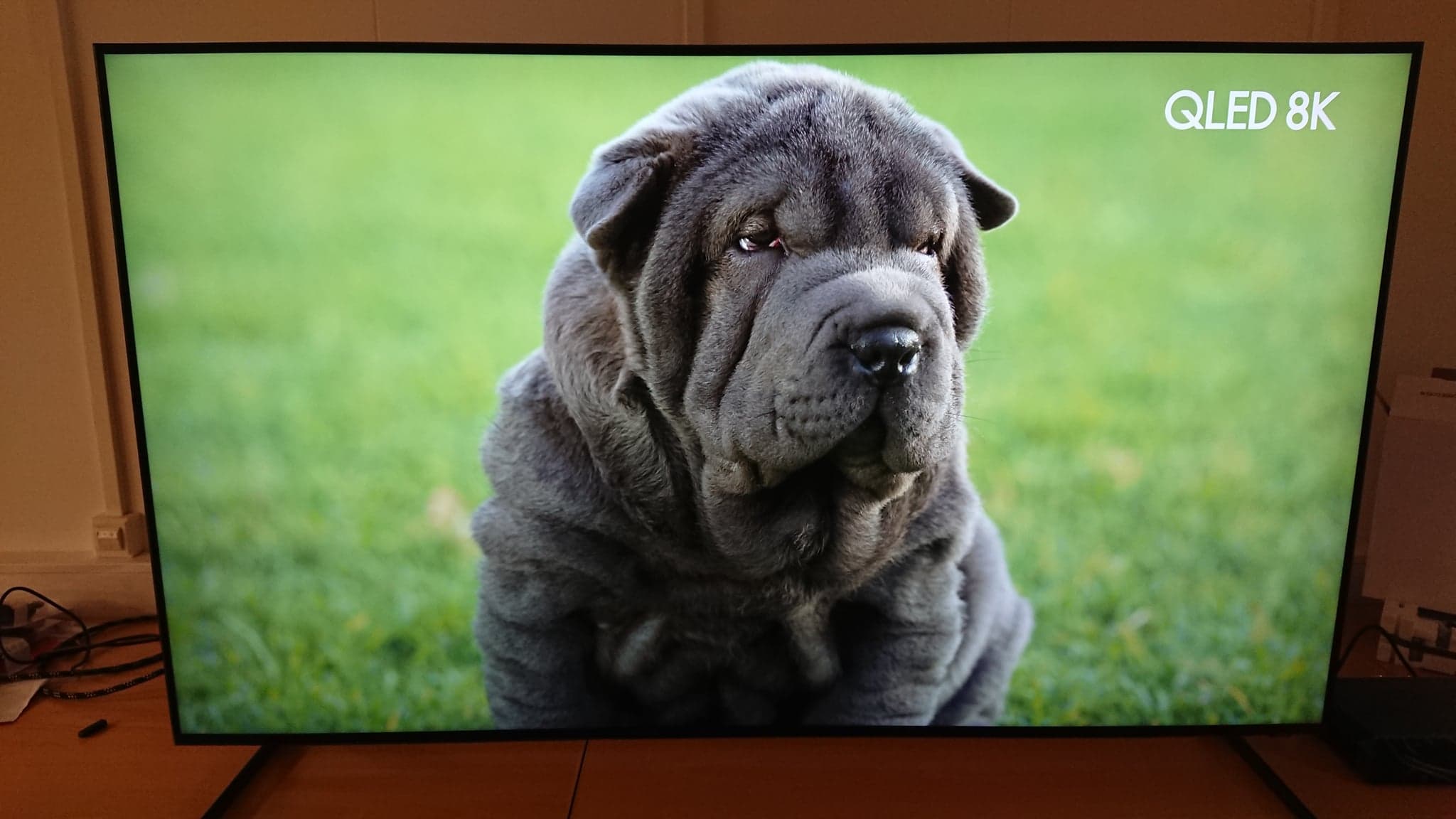Forget 4K, now it’s 8K that counts if you want the coolest TV in the neighborhood. As the TV screens fill a larger part of the wall at home, it’s about having “enough pixels” to fill them with a crystal clear, seamless picture!
Samsung conquered the market last year by being the first manufacturer to launch a production-ready TV with 8K resolution. And before many of the competitors have managed to sum up, the South Koreans are ready with their second generation.
Samsung’s flagship series Q950R are high-tech TV screens for those who do not care about an extra zero or two on the price tag. The 65-inch can be yours for around 5,000, or the 75-inch for approx. 700 buks. If you want to be the right spinner, you can choose the 82-inch to 10,000, but from there the price rises disproportionately much. The top model in the Samsung QE75Q950R series measures a full 98 inches and costs 60,000! It costs to be out early with new technology…
Samsung QLED Q950R
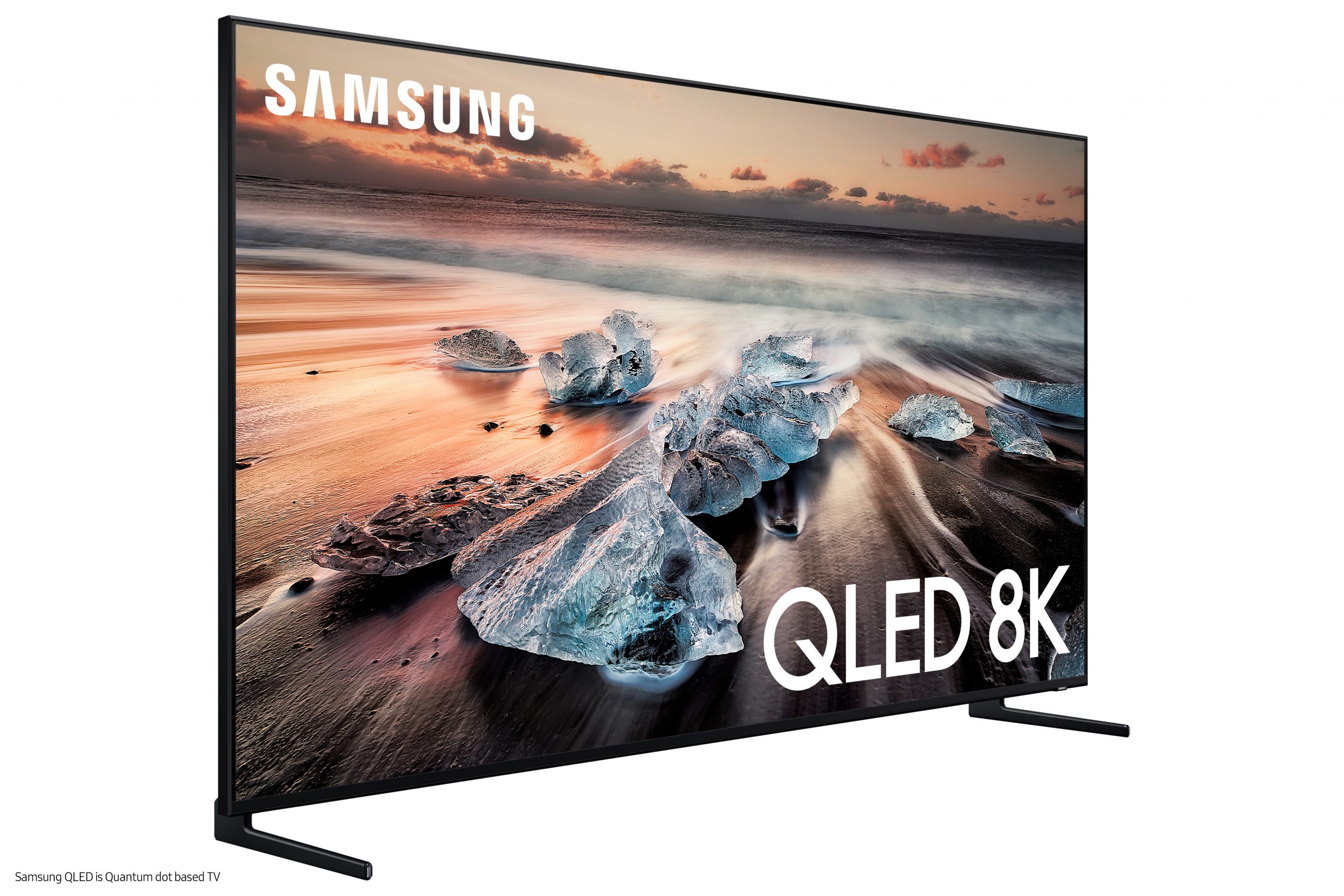
Samsung Q950R looks confusingly similar to its predecessor Q900R, but much is new inside. The main difference is that the Q950R has a new image panel with the same innovations as this year’s new 4K model (Q90R), with powerful improvements in viewing angle and black level. The Q950R has also received updated HDMI inputs prepared for the new HDMI 2.1 standard.
The Q950 also comes in more sizes than before, where it is probably the 75 ”and 82” model that provides the most value for money.
NOTE! Note that this 2019 model is called the Q950R in Europe, while in the US it is called the Q900R.
Design
The design is almost identical to last year’s model, with a rather toned down design in dark brushed metal. The 8K screen is not as thin and sleek as the slimmest OLED screens, due to the extensive LED backlight. The Samsung Q950R, on the other hand, is completely flat on the back, without any protruding parts. Therefore, it can be hung close to the wall using Samsung’s own No Gap wall mount. If you prefer to have the TV standing on the bench, the two metal feet ensure a wide or narrow leg position. They can be stored in a pocket on the back if you choose not to use them.
The Samsung screen is equipped with a so-called Ultra Black filter, which significantly reduces the mirror image in the image panel. The screen glass is super matt, like the pure black hole! It has a positive impact on the image quality, something we will come back to.
Like other QLED models, the Q900R uses a separate box for control electronics, connections and power supply. The so-called One Connection box leads everything further to the screen through a thin cable. The 8K model has a slightly more powerful box, due to power and cooling needs, but it does not get particularly hot or noisy.
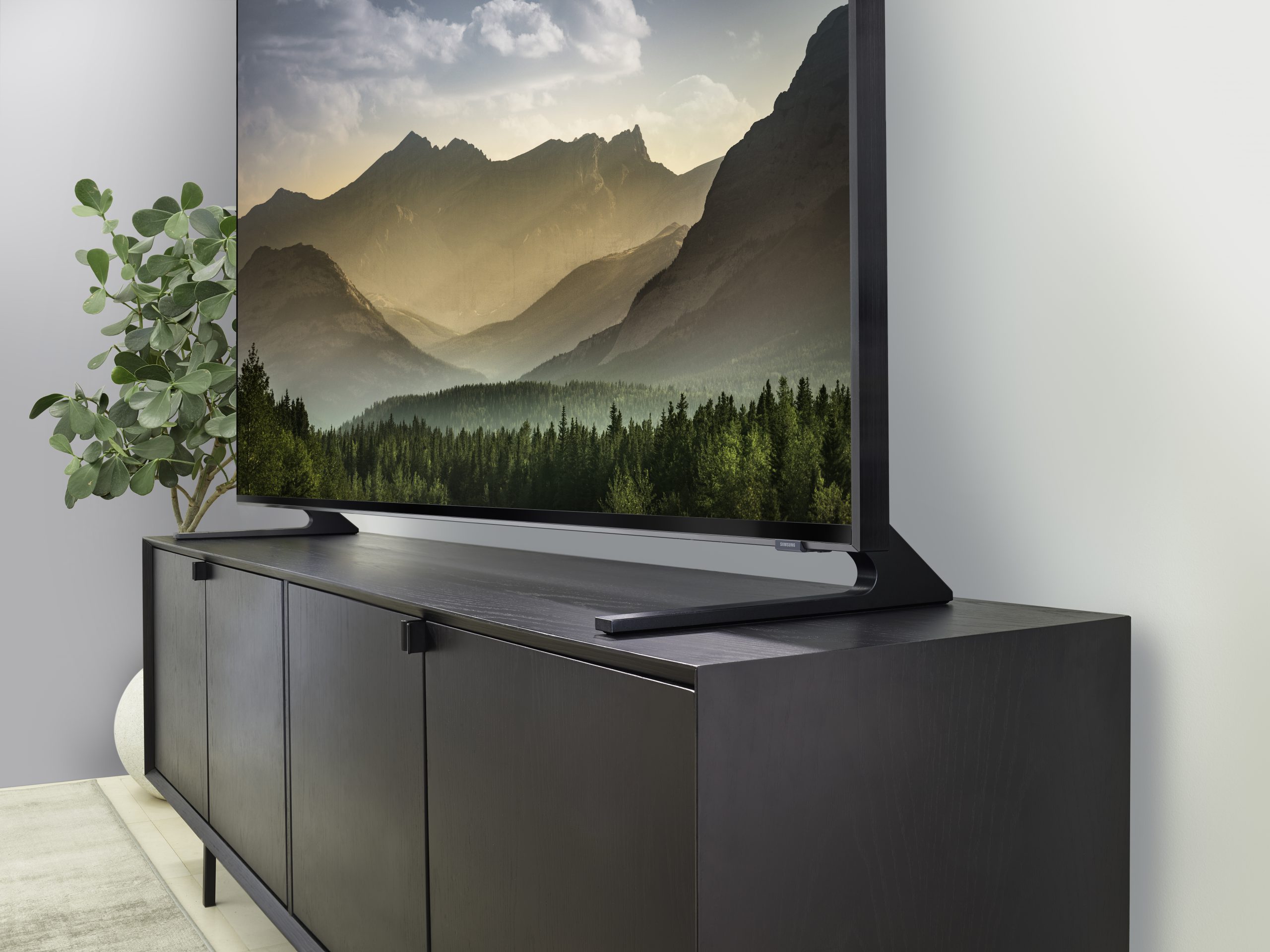
Ease of use and features
Samsung’s Tizen system has established itself as one of the better user interfaces that many of its competitors seek to copy. The TV is super easy to set up using your mobile phone, and the horizontal menu bar makes it easy to find different types of content and settings.
New on the 2019 models are i.a. an enhanced Ambient Mode, which is Samsung’s “screen saver”. It can display images, graphics, weather information and the like, when the screen is in standby.
The 2019 (and some 2018) models have also got Apple’s new TV app built into the smart system, in addition to support for Airplay 2.
Of course, the Samsung screen supports HDR, including the new HDR10 + format. However, there is no sign of Dolby Vision support. Samsung is now the only major manufacturer that does not support the Dolby format with dynamic metadata. This means that a lot of Netflix and Apple content is not shown from its potentially best side.
Upgrading to HDMI 2.1 could be important in the long run: It allows for viewing 8K video at up to 60 frames per second (8K / 60P), which could probably become part of the standard for 8K video when the time comes.
Note! As far as Sound & Vision knows, the new One Connect box with HDMI 2.1 will also be made available to owners of the 2018 model Q900R. More info to come!
Image quality
8K video is still in an early stage, but it is certain that it will come. The Tokyo Summer Olympics in 2020 will be filmed in 8K resolution, and the upcoming game console Playstation 5 will also be compatible with 8K. Not to mention the (gradually) increasing availability of 8K content from YouTube. But so far, it’s a lot about scaling up HD and 4K material so that it looks good on an 8K screen. It requires a TV with a lot of computing power and good image processing to “fill in” the missing pixels.
Pixels are something you can never get too many of. The more pixels the TV has, the more they merge into a picture that is similar to reality. But as the screen size grows, so does the distance between the pixels, which can cause visible image distortion such as saw teeth, grid patterns and the like. A 75 ”or 82” 4K TV will therefore not look as seamless and sharp as a 55-inch with the same resolution.
A 4K TV has 8 megapixel resolution, which is a lot. By comparison, an 8K TV has a full 33 megapixels! This provides a significantly higher pixel density (PPI) for a given screen size.
We recently tested Samsung’s best 4K TV Q90R, and the most important difference between this and the Q950R with 8K, is precisely the sharpness. A 4K screen like the Q90R is basically razor sharp, but the 8K model blows the upper end when it comes to depth, sharpness and general “authenticity”. What is also fascinating is that the increased sharpness does not seem overwhelming or strenuous on the eyes, on the contrary. The 8K screen actually feels more comfortable to rest your eyes on. This feeling persists in most of the image content we challenge the 8K screen with. Samsung’s AI upscaling does an excellent job of upscaling SD, HD and 4K content to fill the entire screen.
Leaving aside the impressive sharpness, there are more similarities than differences down to the 4K model QE65Q90R. The first thing we notice is the wide viewing angle. The image retains color and contrast even when we see the screen from the side.
Like the Q90R, the 8K model has impressive contrast and color intensity from top to bottom. The brightness is actually slightly more intense, with even greater glow in the brightest HDR effects. The black level is also impressive, in both dark and lighter environments. Samsung’s special “Ultra Black” filter creates a dark background without annoying mirror images. This contributes to a very good picture whether the surroundings are dark or bright day.
Sound quality
The picture may take your breath away, but the sound from the 8K screen is not as exciting. Old adventure movies like Lord of the Rings: Two Towers have many grand battle scenes and evocative music, but it all sounds a bit flat and uninspiring. Samsung’s own “Intelligent” sound mode does not compensate for the lack of power of the speakers. Music and sound effects lack a proper bass foundation, and the voices sound a bit stuffy.
Many of the TV manufacturers have now equipped their flagship models with more powerful speakers or even built-in “soundboards” that provide significantly more resilient sound. Samsung obviously calculates that their customers will pay for a sound system in the serious class – and they will probably get it right. You need a separate Atmos soundboard with subwoofer to give the picture the full right.
Also read: Samsung HW-N960 Atmos soundboard
Samsung QE75Q950R: Conclusion
Samsung has refined and updated its flagship screen in most areas, but this is still a curiosity for the extra discerning TV enthusiasts, who want a taste of the future. Samsung QE75Q950R offers the same good qualities and features as the 4K model Q90R, but the difference in image sharpness is marked. However, you have to pay a hefty sum for the extra pixels! If 7,000 becomes too strong a diet, the 4K variant is a far more affordable alternative.

We think
Superb sharpness and depth feel creates a unique image experience. Still no support for Dolby Vision, and the sound does not belong in the high-end class.
6999 €
Specifications
- Størrelse/type: 75” 8K QLED-LCD
- Oppløsning: 7680×4320 (8K Ultra HD)
- Operativsystem: Samsung Tizen
- Innganger: 4 HDMI (2.1), 3 USB
- Utganger: Optisk digital lydutgang
- HDR: HDR10+
- Annet: One Connect koblingsboks
- Web: samsung.no
